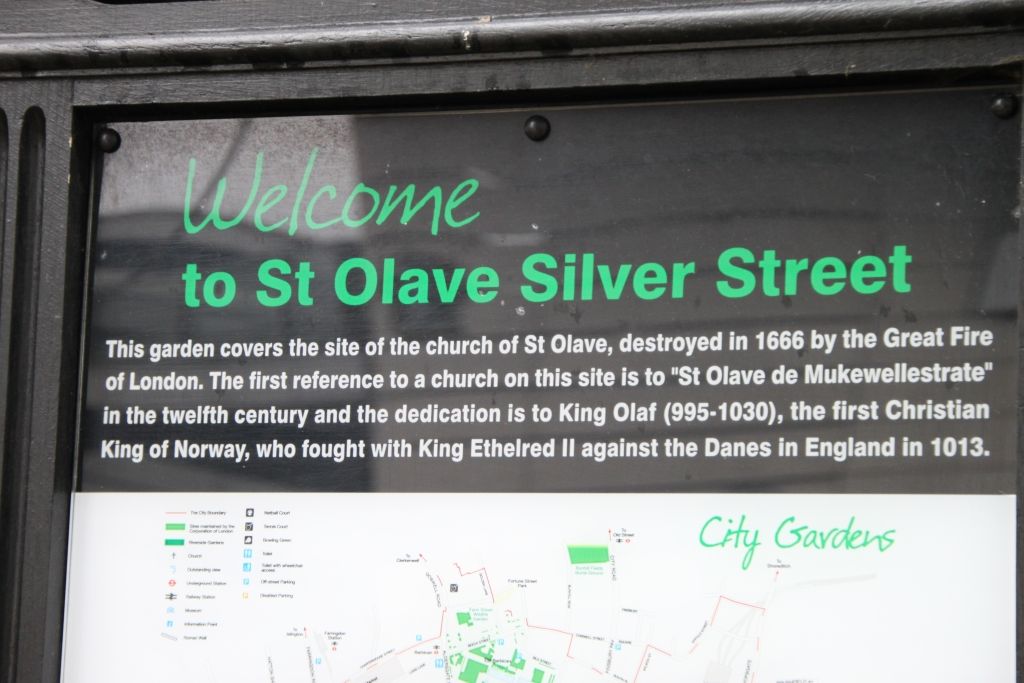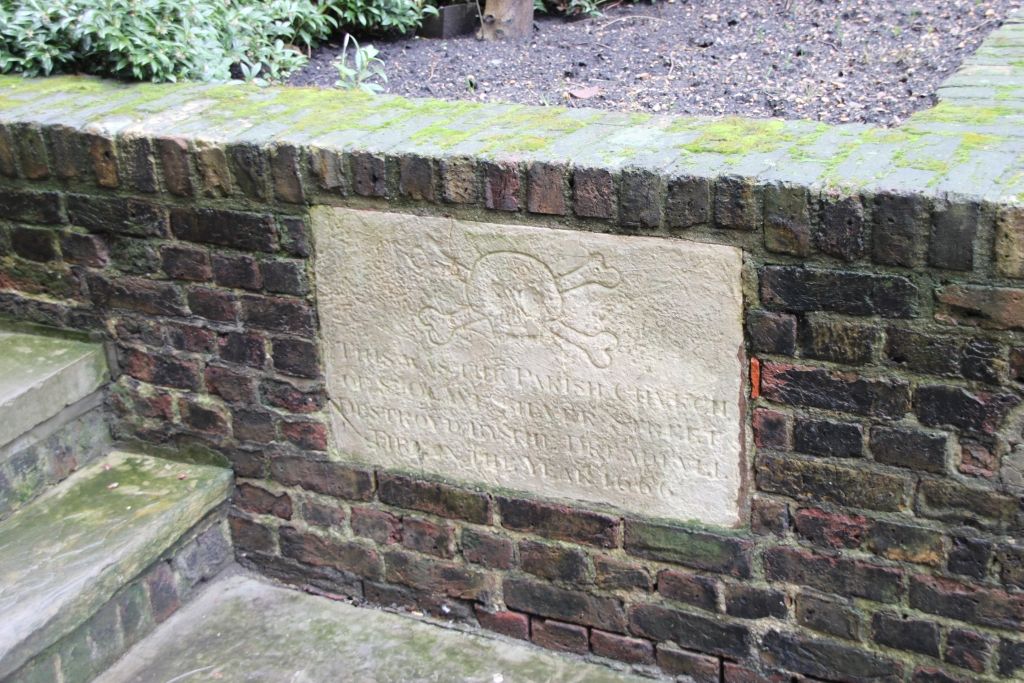This is a story about a lost church which spans centuries and countries. It begins with a gentleman called as Olaf Haraldsson, also known as St. Olaf or St. Olave after his death. He ended up in England and fought the Danes alongside Ethelred II. This was around 1010-1015. So obviously he was well known in England at that time. Then he got made into a Saint mainly because he did so much to popularise Christianity in Norway, so much so that he is known as the patron saint of Norway. He got beatified on August 3, 1031 in Norway.

Here’s the gentleman concerned.
But we now enter into unknown territory as far as the church is concerned. The first reference to an actual church in London seems to come from the 12th century time where a mention of St Olave de Mukewellestrate is found. There has been a Scandinavian community in London for a long time so its not surprising that they will raise a church in their patron saint’s name.
Curiously, then we leap forward four centuries to 1609 where there is the next mention that it was newly built. Does this mean that there was an even older church on this site? that got decayed, and destroyed in the interregnum? Could well be. Then in 1619, it was repaired and beautified. In 1632, a new gallery was added. We also know two notable people were buried in the church:
Here under this Stone lieth buried the Body of John Darcy, second Son to John Lord Darcy of Ehie, who died in Anno 1593. aged 33 yeeres.
Here lieth Griffeilde Windsore, Daughter of Henry Lord Windsore, and Lady Anne his Wife; Daughter and Heyre of Sir Thomas Rivet, Knight. Who departed this life the seven and twentieth day of June, and in the yeere of our Lord God, 1600.
This historical record of two burials before 1609 tells me that there must have been a church there before and a completely new church was built on the site. Interestingly as an aside, Shakespeare is supposed to have lived in a house just yards from this church. But in 1666, the great fire of London completely obliterated this church. Burnt it down. Did a Norwegian Blue on it (if you excuse the pun). Whatever was left of the remains was destroyed in the constant building and rebuilding of London down the centuries and then the Germans put paid to anything that was left by dropping couple of bombs down this place.

Not only the church remains but also the street has disappeared. So what is left? (See here for the full slide show with higher resolution photographs)

This looks like a baptism font. Nothing else is known

The text is unclear but from what I could make it, it says,
“St. Olave’s Silver Street. This churchyard was ??? backing on the road ??? eight feet by this Commissioners of Seners at the Request of the Vestry Anno Dommini 1?65. HK Cunnins Rector , FA Harris, CE Wilson Church Warden”. “

Below the skull and crossbones, the inscription reads:
"This was the Parish Church of St. Olave Silver Street, Destroyed by the Dreadfull Fire in the Year 1666"
There is some doubt about the age of this inscription, some think this dates back to the 19th century rather than the 17th century.

And this is what remains of the courtyard, with a gravestone on the right. That’s it, a vanished church with few remains. What happened to the people who would pray here? who were buried here? those who celebrated marriages, baptisms and masses? And now nothing left other than couple of signs.

1 comment:
Interesting find Shonabhai and intriguing indeed. Your "discoveries" around London are quite educating!!
I never knew that Norway's first king was in England fighting the Danes.
Post a Comment